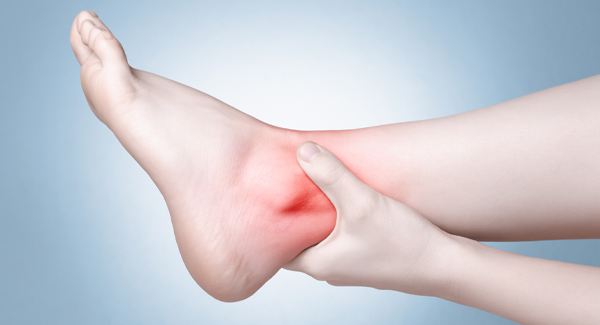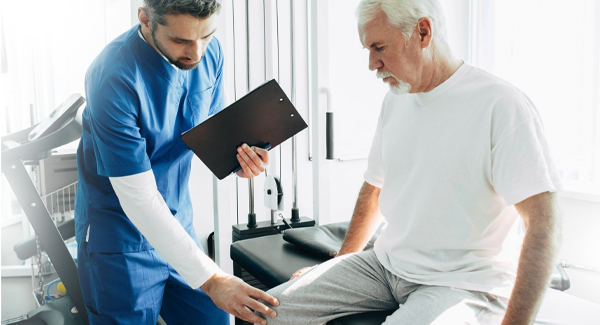Surgery to Ease Back Pain
When conservative treatments don't relieve your back pain, consider these surgical options.
By Stephanie Watson
When your back hurts, it can take over every part of your daily life. The simple act of bending over to remove dishes from the dishwasher can leave you in agony. Surgery is one way to relieve pain from structural problems such as a ruptured or herniated disc, a bone spur from osteoporosis, or a narrowing of the spine called stenosis. But it shouldn’t be the first option you try.
Most back pain improves within a few weeks, so it’s better to start with noninvasive therapies, such as heat, massage, physical therapy, chiropractic adjustments, acupuncture or nonsteroidal anti-inflammatory drugs (NSAIDs). Your doctor might also recommend corticosteroid injections or nerve blocks to reduce or stop the pain.
If you’ve had back pain for more than three months, it’s considered chronic. You may be ready to consider surgery if more conservative treatments have failed to relieve it, especially if you have radiating pain, numbness or weakness down your arm or leg. Surgery may be a necessity if you have a more serious problem, such as an infection, tumor, or loss of bowel or bladder control.
Your doctor may also recommend surgery for:
- Vertebral fracture caused by an injury or weakening from osteoporosis
- Herniated disc that puts pressure on nerves
- Spinal stenosis
- Spinal bone that has slipped out of place, called spondylolisthesis
Back Surgery: Your Options
Here are some of the most common back surgeries, and the conditions each helps.
Discectomy
Discs are the small cushions between the bones of your spine (the vertebrae) and allow them to move without grinding against each other. Discectomy removes the damaged part of a herniated disc that’s putting pressure on nerves of your spinal cord. Surgeons often perform discectomy through a very small incision, which is called microdiscectomy. They either use small tools placed through a tube into your back, or a laser to remove the damaged area of disc.
Nucleoplasty (also called plasma disc decompression or percutaneous discectomy) is a newer variation of the procedure for people with milder herniated discs. The surgeon inserts a small needle into the disc that is causing pain. The needle releases radiofrequency energy, which removes a small amount of tissue in the center of the disc — shrinking it to reduce pressure and pain.
Who it helps: People with a herniated disc that is pressing on nerves of the spinal cord and causing radiating pain or weakness in the arm or leg.
Pros: Discectomy can reduce radiating pain or other symptoms of a herniated disc.
Cons: It won’t relieve other causes of back pain. Surgery also won’t prevent the disc from becoming herniated again. And along with typical surgical risks such as bleeding and infection, it can damage nearby nerves or blood vessels.
Laminectomy
Laminectomy is surgery to remove part or all of the lamina, the bony roof that sits over the spinal canal. It’s done to widen the spinal column and ease pressure on spinal nerves from spinal stenosis, a herniated disk, an injury or a tumor.
Who it helps: People with back or neck pain, sometimes along with numbness or weakness in the arm or leg, that hasn’t improved with conservative treatments like NSAIDs or physical therapy.
Pros: Laminectomy relieves radiating pain, numbness and weakness caused by compressed nerves. It also can improve bowel and bladder problems caused by nerve compression.
Cons: It isn’t as effective for pain in the back as it is at relieving symptoms from compressed nerves, and any improvements you do experience can fade if your arthritis eventually worsens. Risks of this procedure range from bleeding and infection to nerve injuries.
Spinal Fusion
Spinal fusion welds together two or more vertebrae in your spine to stabilize them and keep them from moving. Fusing the vertebrae prevents pain when you bend, lift or twist. This surgery is also done to stabilize bones of the spine after an infection or tumor have damaged them.
Who it helps: This surgery can be helpful for people who have back pain with movement from a herniated disk, spinal stenosis, scoliosis, infection, vertebral fracture or tumors.
Pros: Spinal fusion can help to relieve pain when you move.
Cons: Welding the vertebrae together will make your spine less flexible, so you could lose some range of motion. Sometimes symptoms come back after surgery.
Vertebroplasty and Kyphoplasty
These two similar procedures relieve pain and other symptoms from compression fractures of the vertebrae, which are typically caused by osteoporosis. Both involve bolstering fractured bone with a cement-like material that is injected into the vertebra. The difference is that with kyphoplasty, the doctor places a small balloon-like device into the compressed vertebra and inflates it to restore height and reduce deformity.
Who they help: People with back pain and reduced function caused by compression fractures of the spine.
Pros: These procedures are minimally invasive, and they are often very effective at relieving the pain of a compression fracture. About 75% of people regain movement and are able to get active afterward.
Cons: Risks of the procedure include infection, bleeding, numbness and weakness. If you have osteoporosis, you could develop more compression fractures and continue to have pain after the procedure.
Foraminotomy
This procedure removes bone spurs and other blockages to widen the area around the vertebrae and relieve pressure on compressed nerves.
Who it helps: People with narrowing of the spine (stenosis) caused by arthritis, disc degeneration, tumors or bone diseases such as Paget’s disease.
Pros: Foraminotomy can relieve symptoms caused by nerve compression, including pain, numbness and weakness in the arm or leg.
Cons: Risks include infection, nerve damage and blood loss. There is also a small chance that the procedure won’t relieve your pain, or that your pain will return.
Artificial Disc Replacement
This procedure replaces a worn or damaged disc in the spine with a manmade disc made from either metal or a combination of metal and plastic. It’s an alternative to spinal fusion surgery.
Who it helps: People with back pain caused by damaged discs in the spine.
Pros: Artificial disc replacement relieves back pain and improves mobility. It can restore more normal movement in your spine compared to spinal fusion surgery.
Cons: It may not completely eliminate pain.
Depending on the condition causing your back pain, you may have more than one type of surgery to choose from. Discuss the benefits and risks of each procedure with your doctor, as well as your preferences, to find the one that will best suit your condition and treatment goals.
Published 6/7/2021
Stay in the Know. Live in the Yes.
Get involved with the arthritis community. Tell us a little about yourself and, based on your interests, you’ll receive emails packed with the latest information and resources to live your best life and connect with others.


